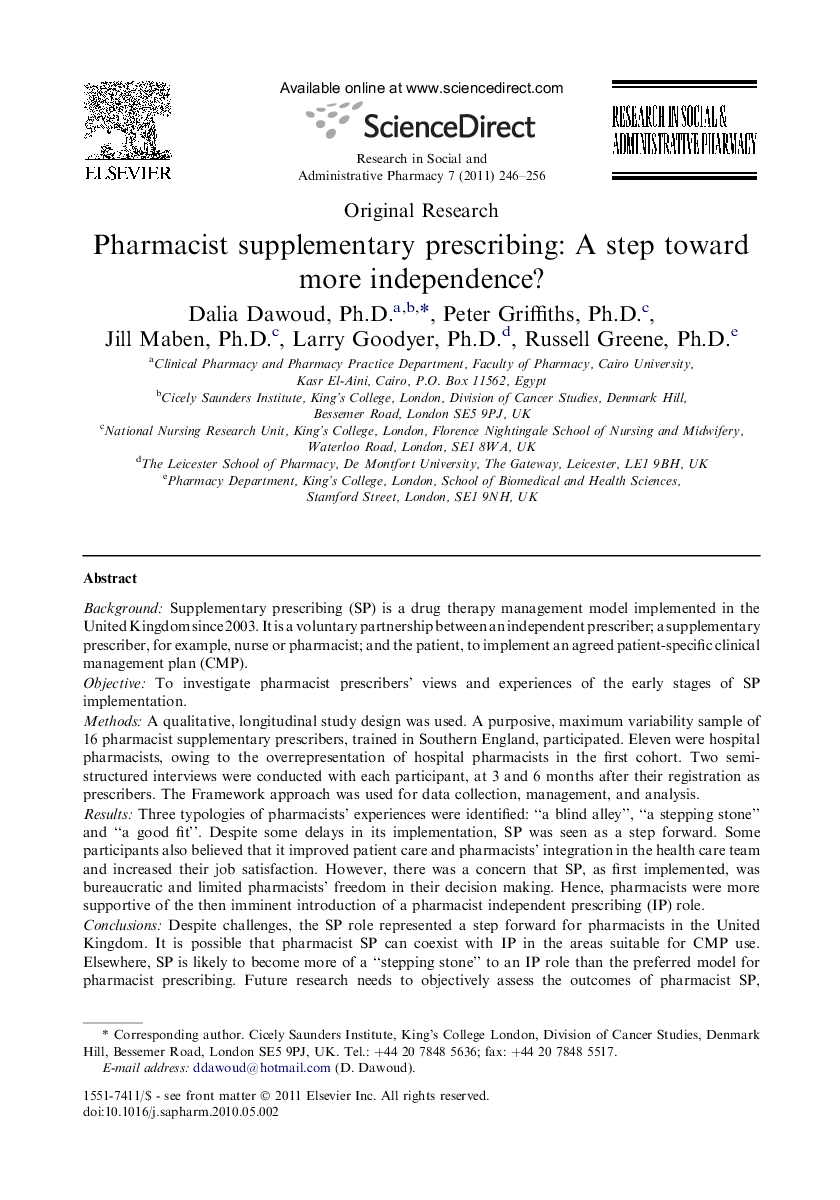| Article ID | Journal | Published Year | Pages | File Type |
|---|---|---|---|---|
| 2508592 | Research in Social and Administrative Pharmacy | 2011 | 11 Pages |
BackgroundSupplementary prescribing (SP) is a drug therapy management model implemented in the United Kingdom since 2003. It is a voluntary partnership between an independent prescriber; a supplementary prescriber, for example, nurse or pharmacist; and the patient, to implement an agreed patient-specific clinical management plan (CMP).ObjectiveTo investigate pharmacist prescribers' views and experiences of the early stages of SP implementation.MethodsA qualitative, longitudinal study design was used. A purposive, maximum variability sample of 16 pharmacist supplementary prescribers, trained in Southern England, participated. Eleven were hospital pharmacists, owing to the overrepresentation of hospital pharmacists in the first cohort. Two semistructured interviews were conducted with each participant, at 3 and 6 months after their registration as prescribers. The Framework approach was used for data collection, management, and analysis.ResultsThree typologies of pharmacists' experiences were identified: “a blind alley”, “a stepping stone” and “a good fit”. Despite some delays in its implementation, SP was seen as a step forward. Some participants also believed that it improved patient care and pharmacists' integration in the health care team and increased their job satisfaction. However, there was a concern that SP, as first implemented, was bureaucratic and limited pharmacists' freedom in their decision making. Hence, pharmacists were more supportive of the then imminent introduction of a pharmacist independent prescribing (IP) role.ConclusionsDespite challenges, the SP role represented a step forward for pharmacists in the United Kingdom. It is possible that pharmacist SP can coexist with IP in the areas suitable for CMP use. Elsewhere, SP is likely to become more of a “stepping stone” to an IP role than the preferred model for pharmacist prescribing. Future research needs to objectively assess the outcomes of pharmacist SP, preferably in comparison with IP, to inform decision making among pharmacists regarding the adoption of such an innovative role.
